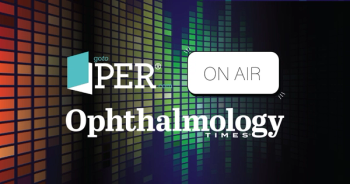
CXL Ophthalmics publishes results of Phase 2 clinical trial for keratoconus
CXL Ophthalmics Inc. on Thursday published results of the EpiSmart cross-linking Phase 2 study for keratoconus.
CXL Ophthalmics Inc. on Thursday published results of the EpiSmart cross-linking Phase 2 study for keratoconus in Cornea: The Journal of Cornea and External Disease.
According to a news release from the company, the Phase 2 trial is the largest study to-date of corneal cross-linking in the treatment of keratoconus, including 1,922 keratoconus patients. Results indicated improvements in best corrected visual acuity at 6 and 12 months after EpiSmart “Epi-On” treatment.
The company noted that safety results suggest greater comfort during the acute healing period and fewer risks compared to the current standard of care.
Michael D. Webb, president and CEO of CXL Ophthalmics, pointed out in the news release that the study’s results demonstrate the promise of the company’s approach to cross-linking in halting the progression of keratoconus in patients and restoring vision with a minimally-invasive process.
“We believe that this study is further proof of the efficacy of CXLO’s transformative cross-linking sy” he said in the news release. “EpiSmart is designed to be minimally-invasive with reduced discomfort compared to current standards of care. Our elegant approach will elevate the standard of care for keratoconus by enabling the treatment of both eyes simultaneously and eliminating the need for further deterioration.”
Key findings include:
- Eighty percent of patients maintained or improved corrected distance visual acuity 12 months post-operation.
- Eighty-nine percent of patients 21 years or younger showed stable or improved vision at 12 months.
- Visual improvements were similar to the current standard of care treatment using an “Epi-Off” cross-linking technique, but with fewer adverse events (AEs) than Epi-Off techniques.
- No corneal infections were reported after Epi-On cross-linking, whereas corneal infection risk is elevated during epithelial removal procedures.
Of those who underwent EpiSmart procedures in our Phase 2 trial 0.3% (6/2,228) developed a corneal haze or opacity, which is reported in 64% of those treated with the FDA approved Epi-Off procedure.
The Phase 2 study consisted of three treatment arms with varying UV doses. Phase 3 trials are planned to assess the safety and efficacy of the EpiSmart cross-linking over 12 months against a placebo and sham control.
Michael W. Belin, MD, chief medical officer of CXL Ophthalmics added tha the current standard of care, Epi-Off cross-linking, is risky, painful, can require months of recovery and can only be performed on one eye at a time.
“Additionally, removal of the epithelium poses significant challenges in resource-constrained settings around the world, a troubling limitation given recent epidemiological research which estimates that keratoconus is more common globally than previously recognized,” Belin said. “We are pleased to report that EpiSmart’s improvements in vision mirror those of Epi-Off cross-linking, but with a reported improvement in comfort and safety and a return to normal activities in 1-2 days rather than weeks.”
Newsletter
Don’t miss out—get Ophthalmology Times updates on the latest clinical advancements and expert interviews, straight to your inbox.













































